We may receive a commission when you use our affiliate links. However, this does not impact our recommendations.
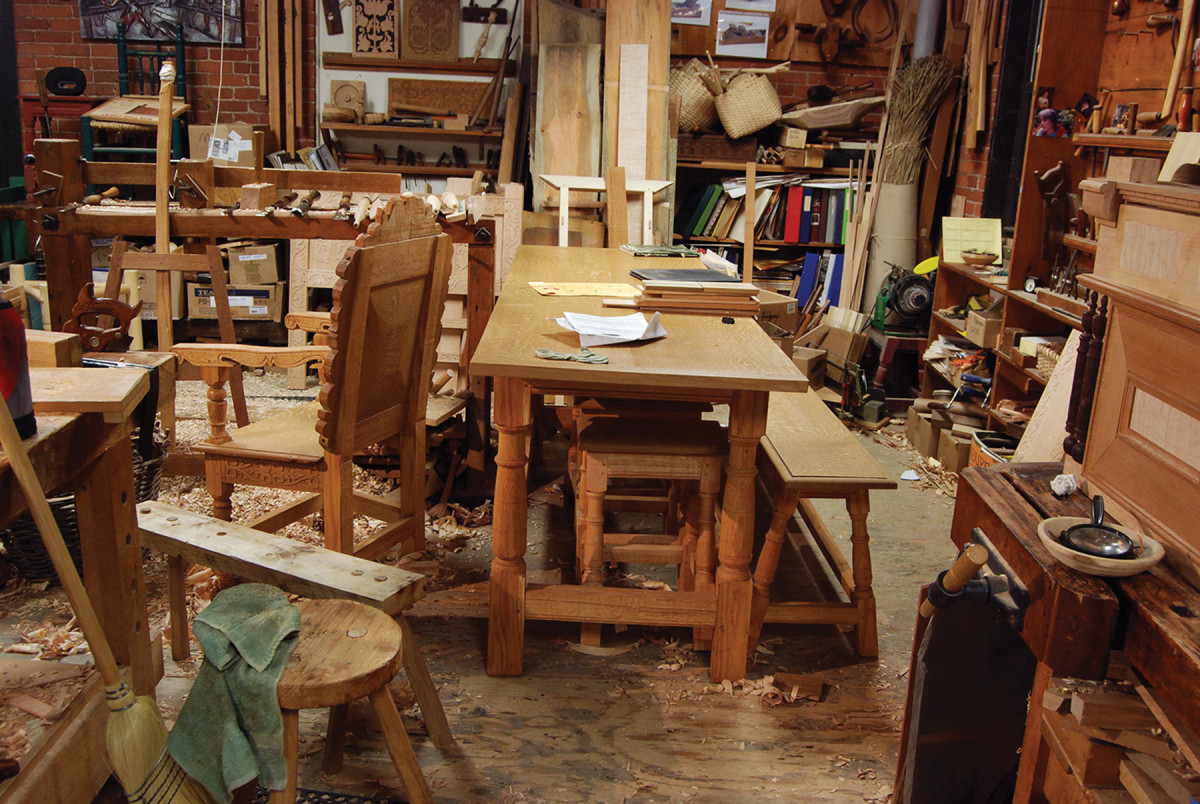
In progress. My shop is no different than those of period joiners (and likely no different than yours), with multiple works in various stages at any given time.
Forget the stockpile of wood; what about the stock of partial projects?
When building furniture, some woodworkers keep a stockpile of lumber on hand and draw from their stacks as they begin a new project. Others buy enough lumber (with some extra) for each piece they are planning to build, often working from a list that includes all the pieces in a given project and their rough dimensions. I work in a different way. I start with a log and split out almost every piece of oak that I use at the bench. Starting with the log is a lot of work, but it’s even more fun.
When I split open a log, I have an idea of what my needs are, but the log often has ideas of its own. If I have a particularly large diameter, straight-grained example, then I split out and stockpile wide panels for joined work, even if I have no immediate need for panels. This approach usually results in my starting several projects at once, then leapfrogging back and forth between them.
Sometimes there are quite a few pieces underway, usually limited by shop space. When I was preparing to move my shop a year ago, I had a joined chest, a chest with drawers, a chest of drawers, two wainscot chairs, a long table and several joint stools. I finished a carved box in the midst of all these.
Most of those I finished up so I didn’t have to move them. Some got stalled (the chest with drawers and the chest of drawers). I’ve just been back in a shop for two months and have revived those two pieces and made a large box with a drawer. Then the floodgates opened.
I now have underway the two chests, a carved box, two more wainscot chairs, a joined stool and the beginnings of two joined carved chests.
I’m not alone in this of course. I take solace that period joiners were as scattered as I am. Or more so.
In the ‘Shopp‘
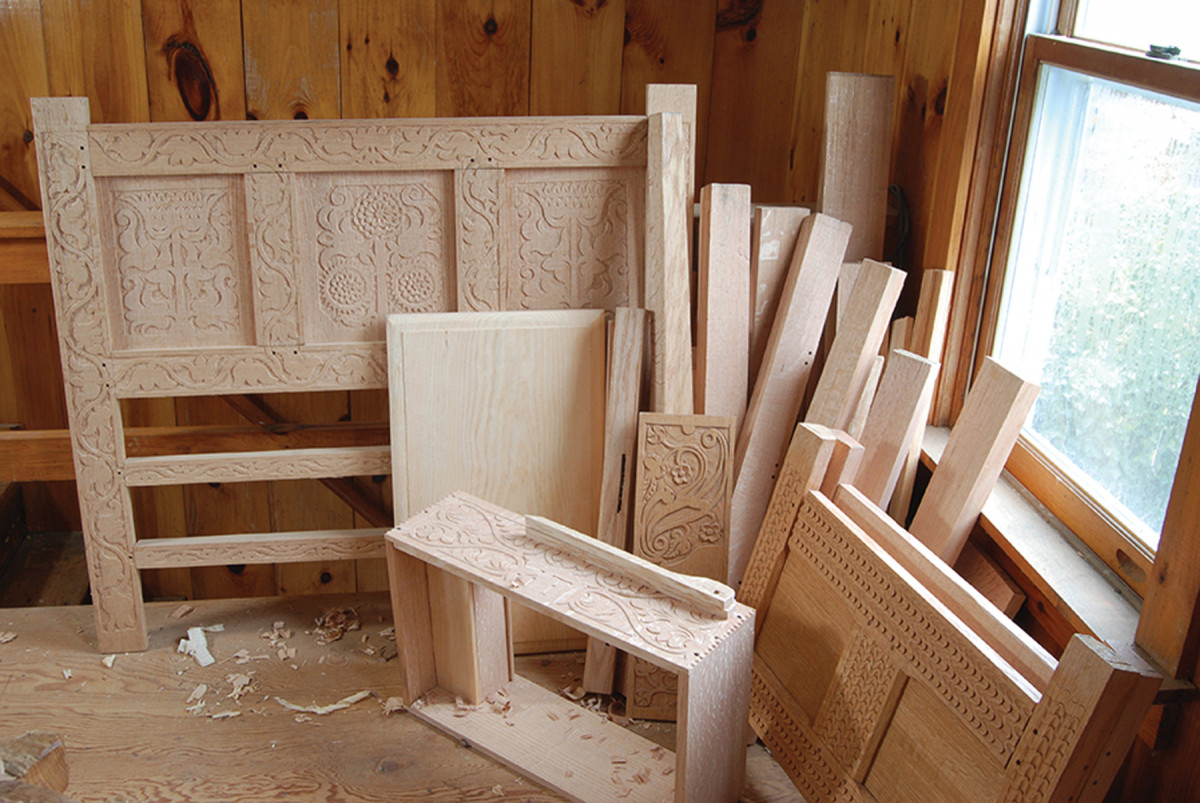
In one corner. This heap includes a chest with two drawers, a box front, an-almost done box with an interior till, parts for a wainscot chair, a piece or two of a chest of drawers and red oak framing stock ready to be “appointed” to any or all of these projects.
Take the 1596 inventory of Philip Jos-lyn, filed in Exeter, England. The appraisers, Nicholas Baggett and Martin Garrett (alias Harman), were both joiners themselves, so we get great details:
“Item one Presse beinge half made 20s; Item certaine timber beinge appointed owt for a Table 6s8d; Item endes of timber and endes of Bourdes in the same shoppe 13s4d; Item certen Seelinge in the same shopp beinge made 8s; Item half a hundred of Montens & half a hundred of stooles legges 4s.”
The “Presse” is a large cupboard for clothing. These usually have doors instead of drawers, often with pegs inside for hanging clothing.
“Certen Seelinge” today would be spelled “certain ceiling,” but it doesn’t mean the part of a room over your head. It refers to wainscotting or paneling on hand, presumably already dedicated to a particular room, hence “certain.” Joiners in the 16th and 17th centuries were often called by the double moniker “joiner and ceiler.”
The 50 “Montens” are muntins – the short intermediate framing parts, perhaps for more of the wainscotting.
The stools’ legs are the squared sections for joint stools, maybe already mortised and turned.
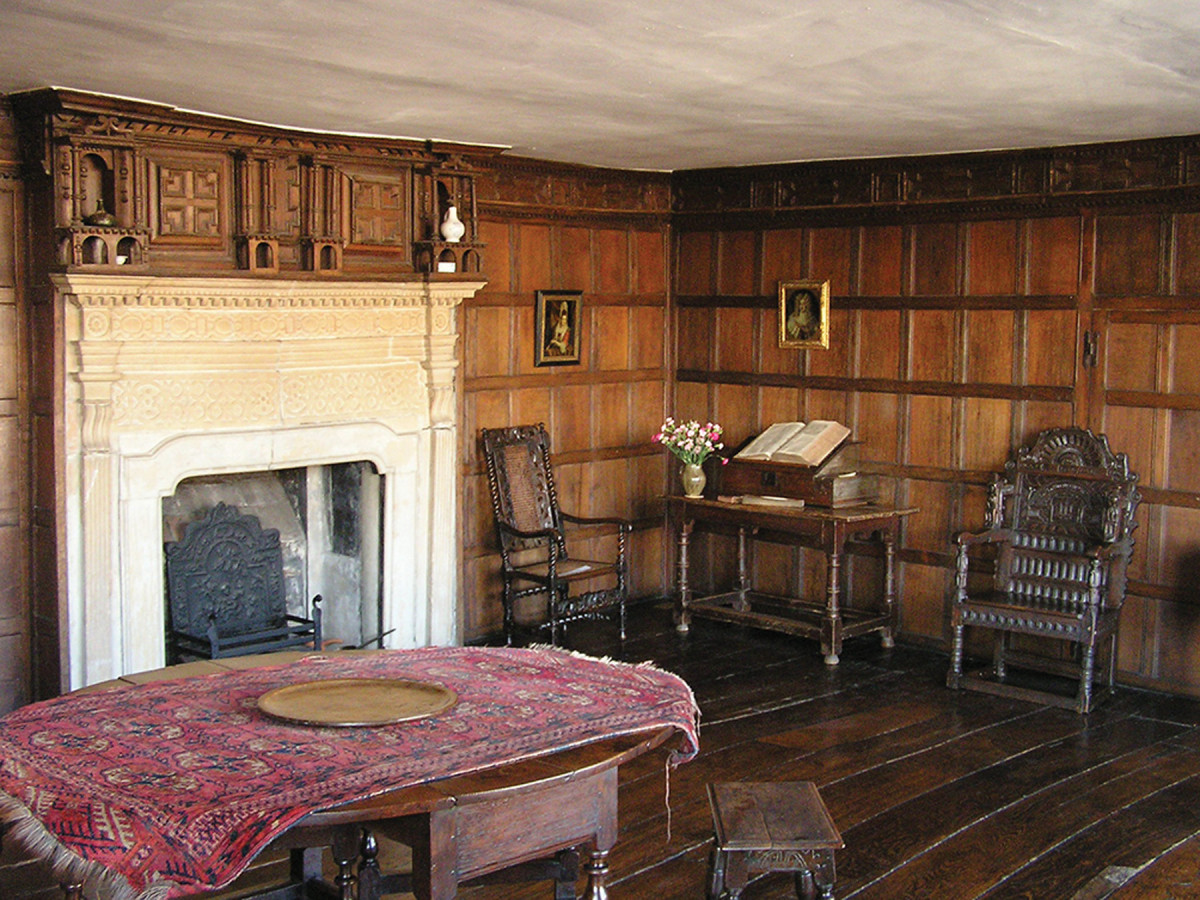
Wainscot. The hall in the Merchant’s House (Marlborough, Wiltshire) shows period wainscotting; a room or two like this could easily use “half a hundred” muntins.
Also, the quantities can throw you. “Half a hundred ” could be 60 pieces. In many cases a “hundred” is six-score, i.e. 120 pieces.
In 1613, Anthony Ould, of Worcester, England, had half-finished work and timber on hand when he died. Listed in his inventory were:
“In both the shopes: two standing bedes finesht £2-6, on(e) liverye bed steed 5s, two bed steeds begune 6s, on(e) presse begune 13s4d, two payer of pyllars and other worke 19s, panels £2-16-7, rayles £4-11-4, 2 inche planckes of wallnut tree £2, halfe inch bordes of wallnut tree 6s8d, inch and quarter of wallnut tree 15s, two oaken plankes 4s9d, certayne other peces of tymber £4, turned and carved worke 12s8d, more odd tymber 6s.”
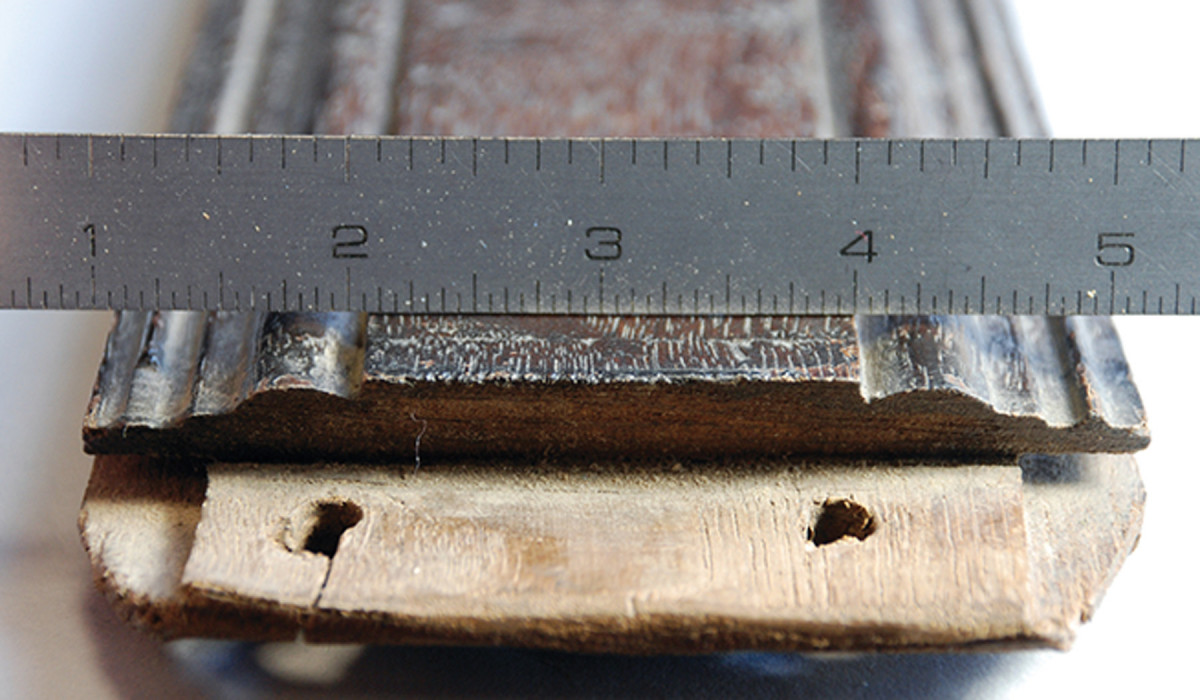
The inset photo shows a cross-section of a wainscot muntin (notice the drawbore holes).
That’s a lot of bedsteads underway at once; he must have had a fair amount of room available. A press is also substantial. The pillars could be large turned work for the bedsteads, but also could be turned parts for cupboards. Like the previous inventory, this one includes stock processed into framing parts, this time rails and panels. The price comparison between the rails (£4/11/4) and the finished bedsteads (£2/6) tells us there’s a lot of rail stocked prepped ahead in this shop.
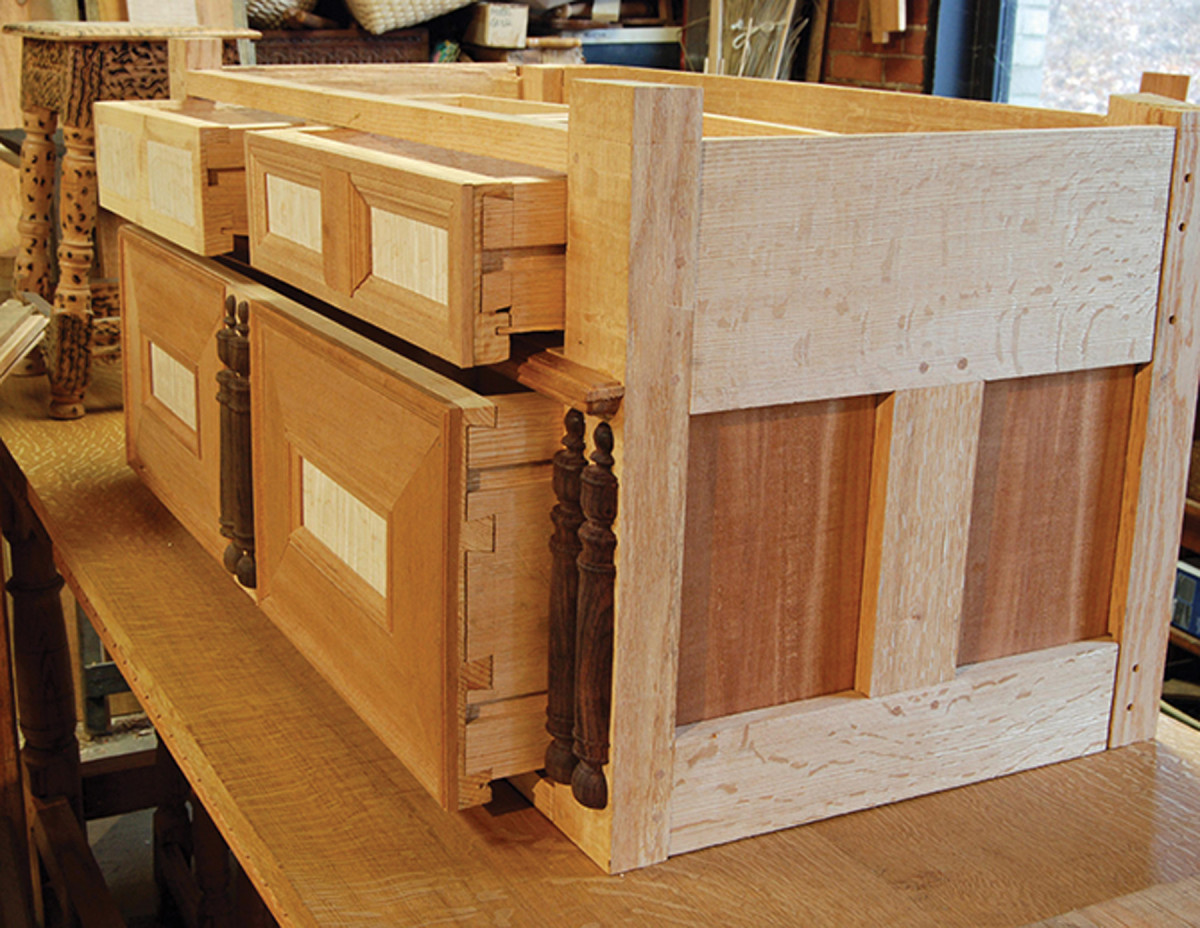
In progress. One piece “begun” is this chest of drawers. This is the upper case, still lacking some applied ornament and the top boards.
Over in New England, the trend continued. In 1671, John Symonds, of Salem, Mass., had “2 Bedsteds almost finished £3” and “3 stools and one half of a Box 12s6d; Timber planke & board £5-12.” His inventory also included “part of a Chest…Timber in the Woods £1-2, an apprentice of 17 years old who hath 3 year and 9 moneths and 2 weekes to serve.”
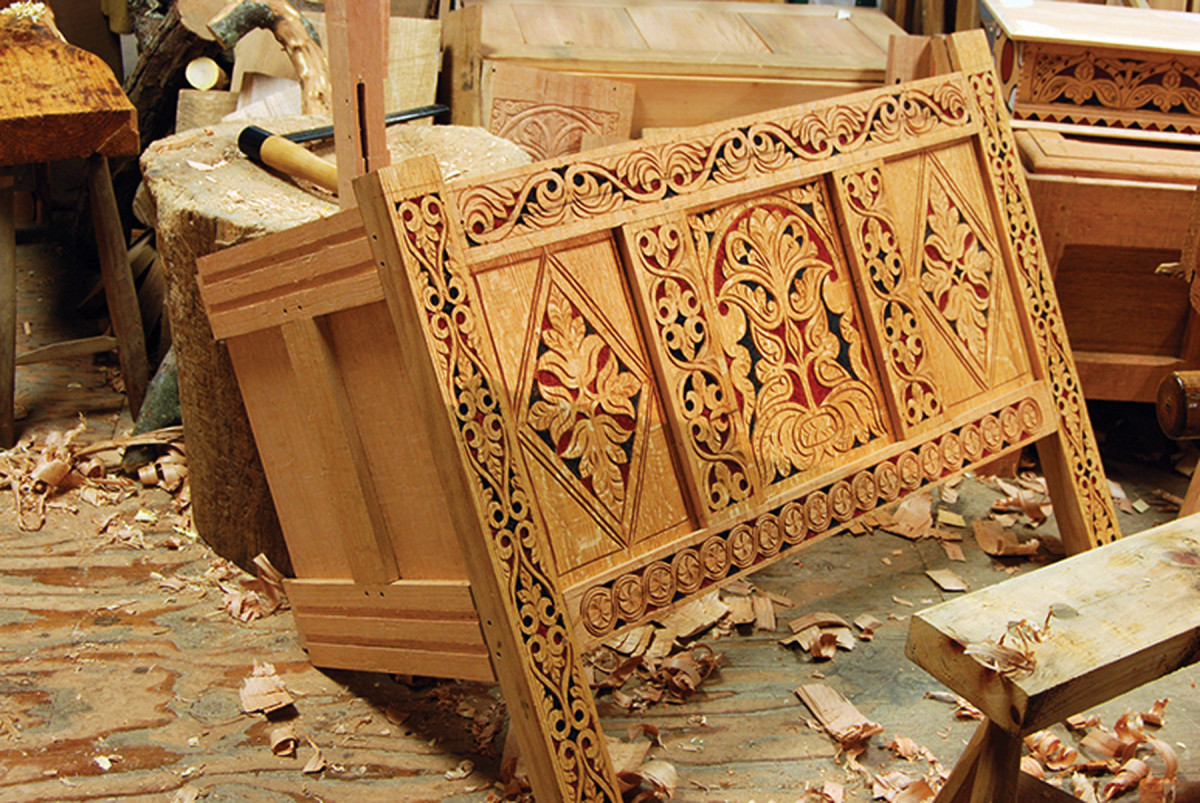
Chest build. Here’s a joined chest – or three-quarters of one, at least. Finish the rear framing, a lid and bottom, and off it goes.
For me, it’s more fun starting projects than finishing them. Ultimately, I get to the point where I’ll settle down and finish off pieces in rapid-fire succession. For a brief time, it really looks like I know what I’m doing. But were an inventory of my “shopp” to land in front of a curious craftsman 400 years from now, pretty much the only thing that would distinguish it from Joslyn’s or Ould’s lists would be the currency, and the spelling of “presse” and “wallnut.”
This article originally appeared in the April 2015 issue of Popular Woodworking.
Here are some supplies and tools we find essential in our everyday work around the shop. We may receive a commission from sales referred by our links; however, we have carefully selected these products for their usefulness and quality.








